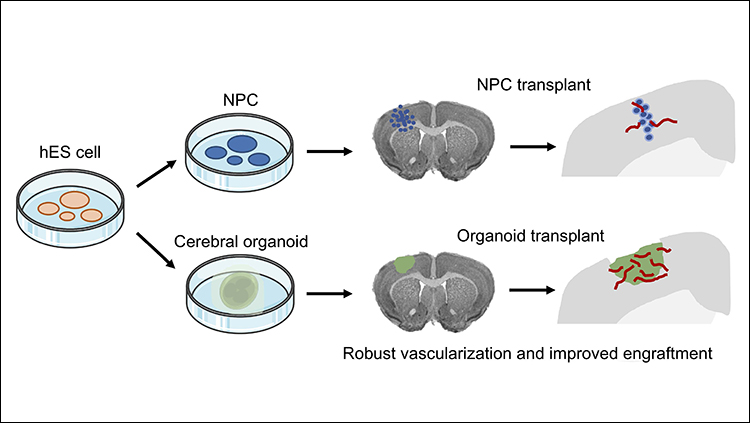Better Way to Transplant Human Stem Cells

A tissue-like structure created from human stem cells and implanted into a damaged region of the mouse brain improves cell survival and differentiation relative to conventional, cell-based methods. The research, published in eNeuro, encourages further investigation of this strategy and its potential to treat traumatic brain injury and neurodegeneration.
Hongyan Zou and colleagues compared two methods for transplanting human pluripotent stem cells into the frontoparietal cortex of young mice, part of which was removed. The researchers report that growing cells into a miniature, brain-like organoid for just over a month was superior to transplanting individual neural progenitor cells. The three-dimensional structure may have helped shield transplanted cells from the damaged host brain to promote their survival.
These findings, together with a previous study demonstrating the feasibility of a similar cell replacement technique, provides a new way to study human brain development and disease progression in the laboratory. They also warrant consideration of the ethical issues associated with the development of cerebral organoids for therapeutic purposes.
Article: Vascularization and engraftment of transplanted human cerebral organoids in mouse cortex
Corresponding author: Hongyan Zou (Icahn School of Medicine at Mount Sinai, New York, NY, USA), hongyan.zou@mssm.edu

















